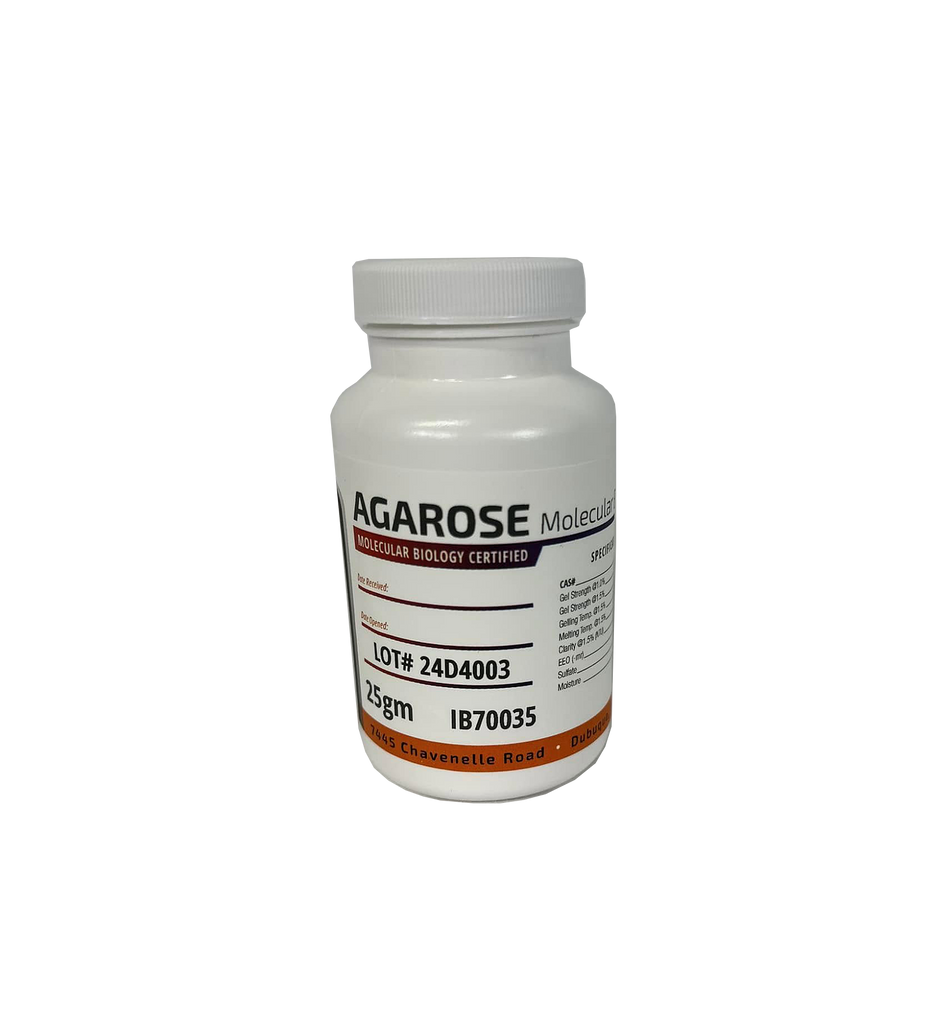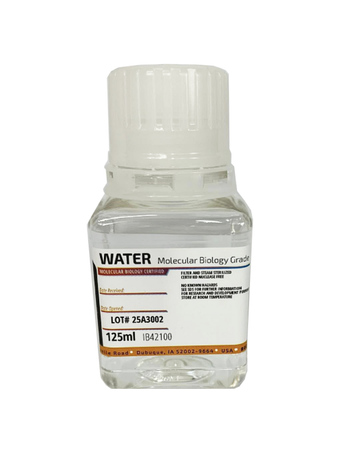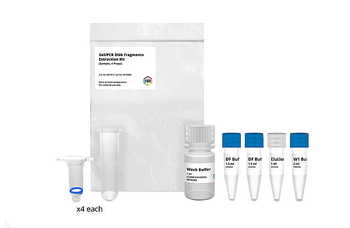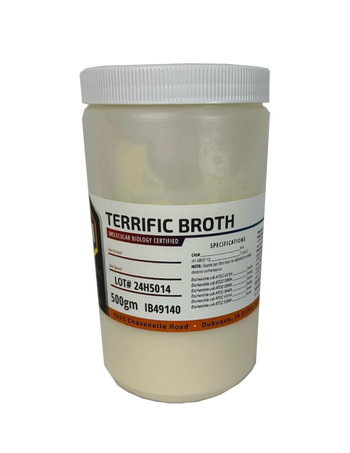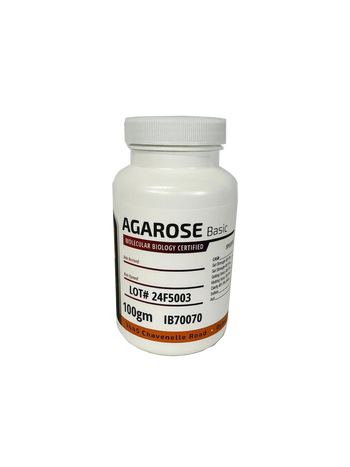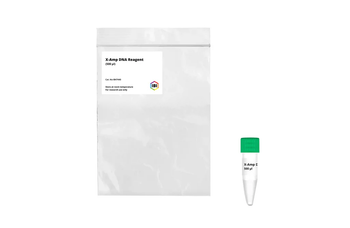
Product Description:
IBI Standard Agarose (Molecular Biology Grade Agarose) products are molecular biology certified for use in standard electrophoresis procedures including nucleic acid, analytical, and preparative electrophoresis and blotting. IBI Standard Agarose is highly refined and purified with strict testing parameters to ensure lot-to-lot consistency. IBI Standard Agarose is a Low EEO agarose with high electrophoresis mobility characteristics.
IBI Standard Agarose is a neutral polysaccharide extracted from the cell walls of certain Rhodophyceae which are also known as agarophyte seaweeds. The structure of the polysaccharide is a galactan, formed by linking agarobioses 1-3, 1-4. This chemical structure gives agarose the capacity to form gels that are very strong even at low concentrations. These gels have a macroreticular structure with a very open mesh which can be adjusted simply by varying the concentration of agarose.
Additional Features:
- CAS#: 9012-36-6
- Extraordinary mechanical resistance
- Low absorption of staining reagents
- Excellent transparency for high visibility
- Greater thermal stability due to high hysteresis
- Lot-to-lot consistency
- DNase- and RNase-Free
- FREE UPS Ground Shipping!
Standard Agarose Youtube Video | IBI Scientific
- Certificate of Analysis
- Physical Specifications
- SDS
Certificate of Analysis Links:
Standard Agarose CofA - Lot#19F2002
Standard Agarose CofA - Lot#19H2003
Standard Agarose CofA_-_Lot#20K1001
Standard Agarose CofA_-_Lot#20K3015
Standard Agarose CofA - Lot#21C4002
Standard Agarose CofA - Lot#22E2003
Standard Agarose CofA - Lot#22L5002
Standard Agarose CofA - Lot#23K1002
Standard Agarose CofA - Lot#24D4003
Standard Agarose CofA - Lot#24L2002
Standard Agarose CofA - Lot#25B2005
Physical Specifications:
CAS#: 9012-36-6
Moisture: ≤ 7%
Ash: ≤ 0.4%
EEO: 0.05-0.13
Sulfate: ≤ 0.10%
Clarity @ 1.5% (NTU): ≤ 3
Gel Strength @ 1.0% (g/cm2): ≥
1200
Gel Strength @ 1.5% (g/cm2): ≥ 2500
Gelling Temperature @ 1.5%: 36°C ± 1.5°C
Melting Temperature @ 1.5%: 88°C ± 1.5°C
Molecular Biology Specifications:
DNase assay: None Detected
RNase assay: None Detected
Protease assay: None Detected
Gel analysis assay: Pass
DNA Resolution: ≥ 1000bp (Finely Resolved)
DNA Extraction assay: Pass
Gel Background: Very Low

